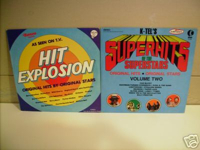A quick comparison of video compression quality at three of the major video upload services. I posted the same video file to YouTube, Flickr, and Vimeo, and have added them here alongside the original for comparison. I think the results speak for themselves.
 The original video was not shot with a video camera, but with a Canon SD1100S pocket still camera, which generated AVI files. I stitched a few together in QuickTime and saved the result as a QuickTime .mov. I did not alter any of the compression settings, and ended up with a file using the old standby codec Motion JPEG OpenDML at 640×480, 30fps, at a data rate of 15.75 mbit/sec.
The original video was not shot with a video camera, but with a Canon SD1100S pocket still camera, which generated AVI files. I stitched a few together in QuickTime and saved the result as a QuickTime .mov. I did not alter any of the compression settings, and ended up with a file using the old standby codec Motion JPEG OpenDML at 640×480, 30fps, at a data rate of 15.75 mbit/sec.
Because it’s 60MBs, I’m linking to the original rather than embedding it.
Subject, by the way, is my son Miles (6) stomping in puddles on a rainy day at Jewel Lake in the Berkeley Hills.
YouTube clearly generates the worst results, with a huge amount of compression artifacts and general jerkiness:
To be fair, YouTube also offers a “high quality” version, which doesn’t look much (any?) better. Especially not compared to Flickr’s and Vimeo’s “normal” output.
Update Sept. 2013: The YouTube version above is no longer the original version. In 2013 I re-uploaded a bunch of old videos, and found that the YouTube quality has increased dramatically. I no longer stand by any of the negative comments about YT video quality stated here.
Few people use Flickr Video, though the feature has been available for nearly a year. Results are definitely better than YouTube, but not as good as the original, and very similar to Vimeo (bottom).
I expected Vimeo to be the clear winner. Vimeo is known for excellent video quality (and the site design is excellent too). But now that I see them side by side, I’m having trouble finding much in the way of quality difference between Vimeo and Flickr. Downsides: It took Vimeo 70 minutes to make the video available after upload, and the tiny size of Vimeo’s social network means the video will get far less “drive-by” traffic than it will on YouTube.


 Miles has been riding with training wheels on his bike for half a year now. Somehow, a sunny summer evening seemed like the perfect time to try ditching them and flying free. He had a bit of trepidation, and after his first wipe-out he declared his “new” bike “stupid” – said he wanted to give it as a present to a 7-year-old. Then he said he wanted to try again. Riding on the grass turned out to be the magic ticket, and made wipeouts fun. Within half an hour he was flying free and ecstatic. Strange, almost comical coincidence – practically every crash was complemented by the ping of a baseball on aluminum bat in the diamond we shared a field with.
Miles has been riding with training wheels on his bike for half a year now. Somehow, a sunny summer evening seemed like the perfect time to try ditching them and flying free. He had a bit of trepidation, and after his first wipe-out he declared his “new” bike “stupid” – said he wanted to give it as a present to a 7-year-old. Then he said he wanted to try again. Riding on the grass turned out to be the magic ticket, and made wipeouts fun. Within half an hour he was flying free and ecstatic. Strange, almost comical coincidence – practically every crash was complemented by the ping of a baseball on aluminum bat in the diamond we shared a field with.
